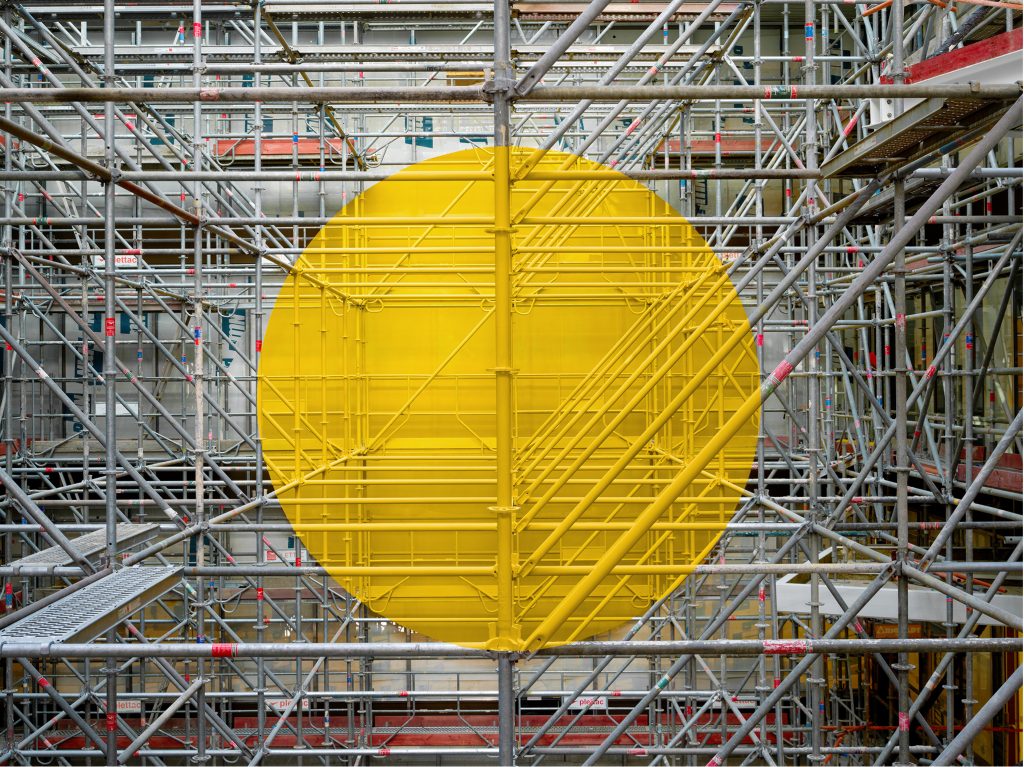Paris
Inkjet printing on hahnemühle, ed. 2/10
146 x 110 cm
Since the 1980s, Georges Rousse – a nomadic artist, as he likes to describe himself – has been working on sites that are abandoned or in the process of being rehabilitated, using an artistic approach in which he is a painter, photographer, installer and architect.
“Georges Rousse creates his forms according to a final point of view, which will be that of the photographic lens. Spread out over the various walls of the space, the drawing cancels out its real depth in order to replace it with the frontal view of a geometric form. Thus, through a highly controlled trompe-l’œil effect and anamorphosis, it overturns our perception of space.“ [1]
This is the distinctive feature of the artist, who works on reality architecture rather than on representation – the photographic image –[2] when the eyes, now accustomed to digital manipulation, find it hard to appreciate the true spatial reality of the image presented to us. An installation that implies the presence of the artist and his physical involvement in this trompe-l’œil. To create Paris, the artist spent four days in a building in the rue de Courcelles (17tharrondissement). He worked in a building under construction as he was interested in the ephemeral architecture formed by the scaffolding used to construct the glass roofs of this future office building – an echo of the transformation of the RAJA Group’s European headquarters at the time this work entered the Collection. In this environment, Georges Rousse creates what he calls a yellow sun; the painted circle, a recurring motif in his work, evokes both the light piercing through the cold metal of the building and the camera lens…
[1] « Georges Rousse », Institut d’art contemporain, Villeurbanne / Rhône-Alpes
[2] Lupien, Jocelyne, « Conversation en chantier avec Georges Rousse » in Georges Rousse. Tour d’un monde, éd. Actes Sud, 2010, p. 23
